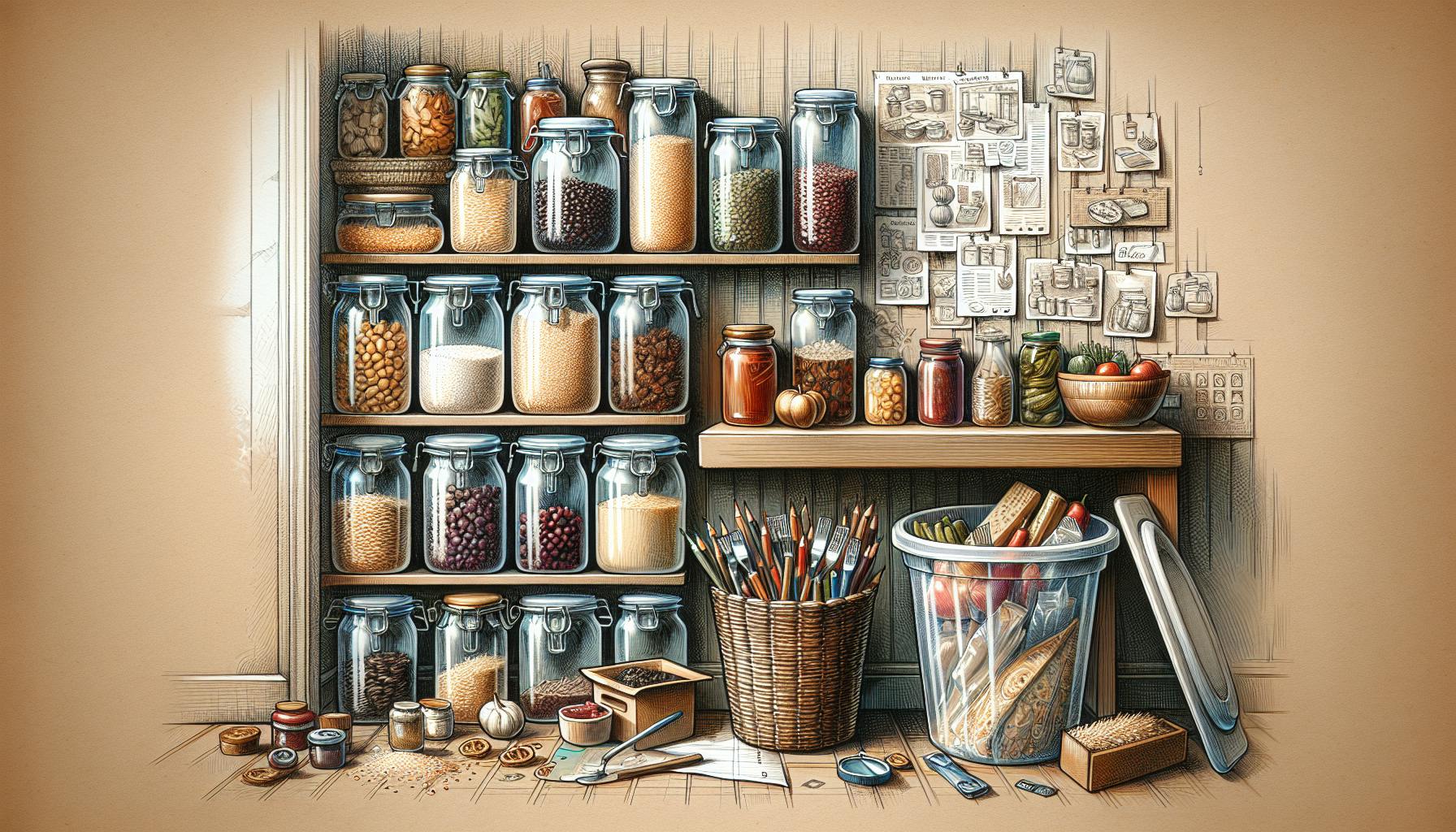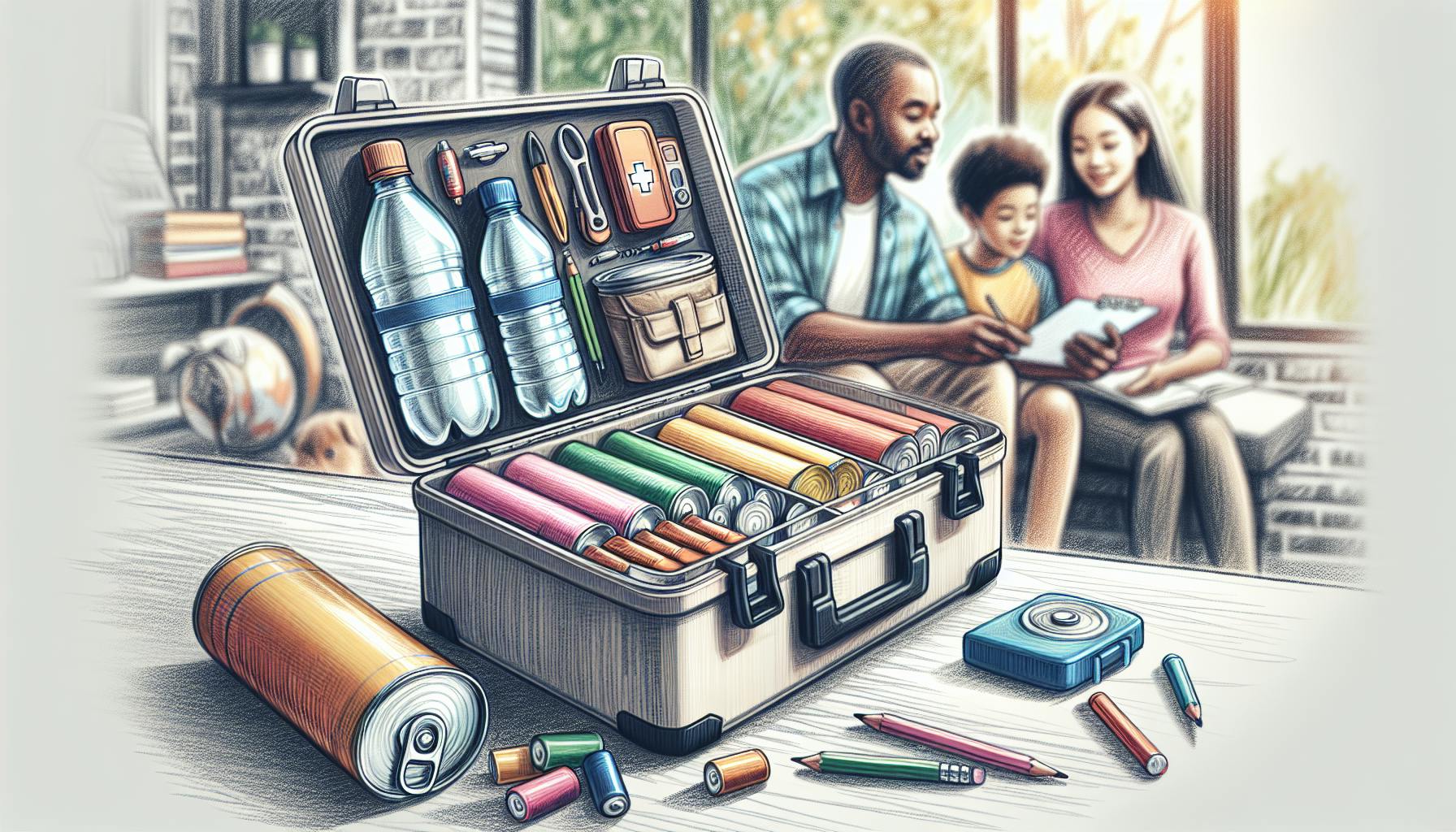Why Canned Goods are Vital for Emergency Preparedness
Having a robust supply of canned goods is one of the most important aspects of any emergency preparedness kit. When fresh foods spoil and access to groceries becomes limited during a crisis, shelf-stable canned goods will be your lifeline to getting the essential vitamins, minerals, and calories needed to keep you and your family nourished and healthy.
Canned items have an exceptionally long shelf life compared to fresh or frozen foods. Most cans have a best by date of at least 2 years from when they were produced. Some can even last 5 years or longer if stored properly. This makes canned foods perfect for stockpiling now to be ready later when disaster strikes. Even foods like meat, fish, fruits, vegetables, beans, and soup can be canned for long-term storage.
When building your emergency food reserves, you’ll want to think carefully about getting a wide assortment of canned goods to cover all the major food groups. Having variety ensures your diet will not be monotonous or lacking in key nutrients during extended periods relying on your stockpile. With the right balance of canned fruits, vegetables, proteins, grains, and other pantry staples on hand, you’ll be equipped to assemble nutritious no-cook meals or even cooked dishes without power or access to fresh groceries.
Recommended Canned Fruits
Fruits provide essential vitamins, minerals, and antioxidants. Focus on fruits canned in juice rather than heavy syrups:
- Pineapple - Excellent source of vitamin C, manganese, and bromelain.
- Applesauce - Provides pectin fiber and vitamin C. Unsweetened is ideal.
- Fruit cocktail - Assorted fruits provide diverse vitamins and minerals.
- Mandarin oranges - Peelable, seedless, and portable vitamin C.
- Peaches - Give you vitamin C, potassium, beta carotene, and fiber.
- Cranberries - Packed with vitamin C and antioxidant power.
Essential Canned Vegetables
Vegetables of all types provide nutrients vital to health:
- Green beans - Good source of vitamins A, C, K, and folate.
- Carrots - Excellent for vitamin A crucial for eyes and immunity.
- Corn - Provides fiber, B vitamins, potassium, and lutein.
- Tomatoes - Supply lycopene, vitamin C, and potassium.
- Beets - Provide immune-boosting vitamin C, fiber, and folate.
- Baked beans - Mix of protein, antioxidants, fiber, and minerals.
Canned Beans, Lentils and Legumes
Beans offer plant-based protein, fiber, and iron:
- Kidney beans - High in plant protein, fiber, folate, iron, and potassium.
- Black beans - Excellent vegetarian protein and fiber. Also contain antioxidants.
- Chickpeas - Abundant in plant protein, fiber, manganese, folate, and iron.
- Lentils - Packed with protein, fiber, folate, potassium, iron, and B vitamins.
- Refried beans - Convenient mashed pinto beans for added protein.
Shelf-stable Canned Meat and Seafood
Canned varieties provide protein when fresh options aren’t available:
- Tuna - Nutrient-dense and affordable canned protein.
- Salmon - Canned salmon has anti-inflammatory omega-3 fatty acids.
- Chicken - Provides a quick protein boost and versatility.
- Vienna sausages - Precooked sausage is a good source of protein, iron, and B vitamins.
- Corned beef hash - Includes beef and potatoes for added calories.
Canned Soup Staples
Soups offer a quick meal packed with nutrition:
- Chicken noodle - Classic soup provides protein, veggies, and comfort.
- Tomato - Provides antioxidants like lycopene. Look for low-sodium options.
- Potato - Starchy and creamy soup is perfect for calories and potassium.
- Minestrone - Mix of beans, veggies, pasta, and seasonings.
- Vegetable beef - Combines protein, fiber, veggies, and flavor.
Proper Storage for Maximum Shelf Life
Use these tips to ensure your canned goods last as long as possible:
- Store cans in a cool, dry place away from direct light or moisture.
- Use the FIFO (first in, first out) system to rotate stock.
- Check expiration dates every 6 months and use oldest cans first.
- Keep cans free of dust by wiping them down periodically.
- Separate cans with cardboard to prevent denting or damage.
- Label cans with purchase dates for easier stock rotation.
Choosing the Best Canned Options
Look for canned goods with these advantageous characteristics:
- Seek lower sodium options to limit daily sodium intake.
- Select fruit canned in juice rather than heavy syrup.
- Pick vegetables without added salt, sugar, or preservatives when possible.
- Prioritize easy open pull-top lids that don’t require a can opener.
- Stick to familiar foods you already eat and enjoy.
Safe Consumption of Canned Goods
Take these precautions when using your canned stockpile:
- Never consume food from cans that are leaking, rusted, bulging or badly dented.
- Ensure cans have no breaks in inner seal by examining before opening.
- Wash hands and equipment before and after handling canned goods.
- Discard any cans past their expiration or best by date printed on the label.
Handy Tools for Accessing Canned Goods
Have these supplies ready for getting into and serving your canned reserves:
- Manual can opener to access cans without power.
- Heavy work gloves to safely handle sharp lids and edges.
- Large spoons, spatulas, or ladles for scooping out contents.
- Plates, bowls, cups, and utensils for serving.
- Sharp knife to cut meat, slice vegetables, and chop other ingredients.
- Zip-top bags and aluminum foil for storing opened cans.
Creative Ways to Use Your Canned Reserves
Take advantage of your stockpile in these nutritious and delicious ways:
- Combine canned chicken, vegetables, and beans into quick protein-packed stir-fries.
- Make simple soups or stews by mixing assorted canned goods together.
- Prepare tasty canned fruit salad combinations for something sweet.
- Serve canned hash or chili spooned over crackers or baked potato pancakes.
- Blend canned fruits and veggies into refreshing nutrient-rich smoothies.
No-Cook Snacks and Meals
Assemble no-cook snacks, appetizers, lunches, and dinners:
- Crackers with canned tuna/salmon for instant protein anywhere.
- DIY bean dip from mashed beans, canned corn, carrots, and seasonings.
- Canned fruits combined with yogurt, cottage cheese, or oatmeal.
- Roll-ups with canned meat, cheese slices, spinach in a tortilla or bread.
- Salmon salad sandwich with bones removed and mayo or Greek yogurt.
- Canned vegetable and bean salad with vinaigrette dressing.
Simple Hot Meals
Warm up with these easy canned food dishes:
- Vegetable fried rice combining canned corn, carrots, beans, chicken.
- Pasta in tomato sauce with canned spinach, kidney beans, mushrooms.
- Shepherd’s pie casserole made with canned carrots, peas, corn, and beef.
- Tacos filled with canned refried beans, shredded chicken, salsa.
- Soup extended into a hearty stew by adding canned vegetables.
Creative Baking Uses
Bake up some tasty treats with your canned reserves:
- Use applesauce or pumpkin puree in place of oil in cakes and breads.
- Make pumpkin bread, muffins, or pancakes with canned puree.
- Fold drained canned fruit chunks into cake, muffin, scone, or quick bread batter.
- Condensed and evaporated milk for caramel, fudge, candy, and rich desserts.
Conclusion
Having a well-stocked supply of nutritious canned goods for your emergency kit ensures your continued health no matter the crisis. Aim for a variety of canned fruits, vegetables, proteins, beans, and staple ingredients. Store properly, and safely consume within expiration dates. Mix and match to create delicious no-cook snacks, meals, baked goods, and more. With the right balanced assortment of canned foods in your emergency reserves, you can make it through any disaster in good health and spirits.
For more tips on weloveprepping.com/blog/canned-goods-prepping-essentials-for-emergencies/">building your emergency food stockpile, be sure to visit WeLovePrepping.com regularly for practical guides on survival preparedness.


